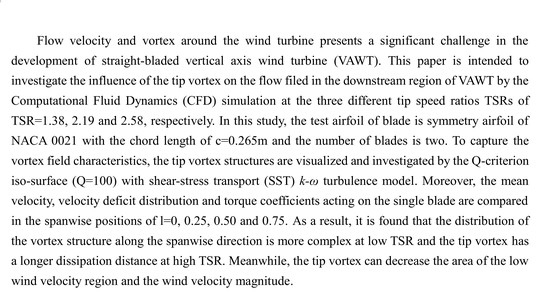Numerical Investigation of the Tip Vortex of a Straight-Bladed Vertical Axis Wind Turbine with Double-Blades
Abstract
:1. Introduction
2. Theory and Numerical Method
3. Geometric Model and Mesh Strategy
3.1. Geometric Model
3.2. Mesh Strategy
3.3. Boundary Conditions
3.4. Wind Tunnel Experimental Measurements
4. Data Processing Method
5. Results and Discussion
6. Conclusions
- (1)
- The vortex which is generated by the support structure increases the turbulence intensity in the rotating plane of wind turbine (–0.5 < x/R < 0.5). Meanwhile, the mean wind velocity in the mainstream direction increase with the increase of C-l due to the tip vortex effect.
- (2)
- Compared with other vortices, the tip vortex has a longer dissipation distance. It is noted that the vortex structure is an asymmetrical relative to the y-z plane. The tip vortex mainly originates in the region of azimuth angles of −90° < θ < 90° due to the large angle of attack.
- (3)
- The areas of low velocity region have the minimum in the cross-section of l = 0 and the area decreases with the increase of l at three different TSRs. In addition, the areas of low wind velocity regions at TSR = 2.58 are larger than that of TSRs = 1.38 and 2.19 in all the cross-sections. Therefore, in the case of the low tip speed ratio, the effect of tip vortex on the wind velocity is larger and the wind velocity in the wind turbine wake has a faster recovery than that of a higher TSR.
- (4)
- The torque coefficients show the maximum value at about the azimuth angle of θ = 90° on the upstream region. In the case of l = 0, the maximum values of torque coefficient are 0.417, 0.450 and 0.412 for the TSRs of 1.38, 2.19 and 2.58, respectively. In the case of l = 0.75, the maximum values of torque coefficient are 0.206, 0.114 and 0.044 at TSRs = 1.38, 2.19 and 2.58, respectively.
Acknowledgments
Author Contributions
Conflicts of Interest
Nomenclature
| c | Airfoil chord length [m] |
| CQ | Rotor torque coefficient |
| F1 | Hybrid function [k-ω] |
| F2 | Second hybrid function [SST k-ω] |
| H | Spanwise length [m] |
| H0 | Numerical region height [m] |
| k | Turbulent kinetic energy [m2/s2] |
| l | Section perpendicular to the z axis [=z/(H/2)] |
| L | Numerical region length [m] |
| R | Rotor radius [m] |
| Re | Reynolds number [=Uc/v] |
| S | Tension constant |
| U | Local wind velocity [m/s] |
| U0 | Mainstream velocity [m/s] |
| W | Numerical region width [m] |
| x | Longitudinal coordinate [m] |
| y | Lateral coordinate [m] |
| z | Vertical coordinate [m] |
| α | Angle of attack [°] |
| μt | Eddy viscosity [(N·s)/m2] |
| ν | Kinematic eddy viscosity [m2/s] |
| θ | Azimuth angle [°] |
| ρ | Air density [kg/m3] |
| ω | Specific turbulent dissipation rate [s−1] |
| ω0 | Angular velocity [rad/s] |
| ψ1 | Auxilary relation |
| CFD | Computational fluid dynamics |
| NACA | National Advisory Committee for Aeronautics |
| HAWT | Horizontal axis wind turbine |
| SST | Shear stress transport |
| TSR | Tip speed ratio [=(Rω)/U0] |
| VAWT | Vertical axis wind turbine |
References
- Chiras, D. Wind Power Basics: A Green Energy Guide; New Society Publishers: Vancouver, BC, Canada, 2010. [Google Scholar]
- Jefferson, M. Sustainable energy development: Performance and prospects. Renew. Energy 2006, 31, 571–582. [Google Scholar] [CrossRef]
- Ashwill, T.D.; Sutherland, H.J.; Berg, D.E. A Retrospective of VAWT Technology; Sandia National Laboratories: Albuquerque, NM, USA, 2012. [Google Scholar]
- Li, Q.; Kamada, Y.; Maeda, T.; Murata, J.; Iida, K.; Okumura, Y. Fundamental study on aerodynamic force of floating offshore wind turbine with cyclic pitch mechanism. Energy 2016, 99, 20–31. [Google Scholar] [CrossRef]
- Burtnick, J.; Fairbanks, R.; Gross, F.; Lin, E.; McCrone, B.; Osmond, J. Placement of Small Vertical Axis Wind Turbine to Maximize Power Generation Influenced by Architectural and Geographic Interfaces in Urban Areas; University of Maryland: College Park, MD, USA, 2015. [Google Scholar]
- Ryan, K.J.; Coletti, F.; Elkins, C.J.; Dabiri, J.O.; Eaton, J.K. Three-dimensional flow field around and downstream of a subscale model rotating vertical axis wind turbine. Exp. Fluids 2016, 57, 1–15. [Google Scholar] [CrossRef]
- Lei, H.; Zhou, D.; Bao, Y.; Li, Y.; Han, Z. Three-dimensional Improved Delayed Detached Eddy Simulation of a two-bladed vertical axis wind turbine. Energy Convers. Manag. 2017, 133, 235–248. [Google Scholar] [CrossRef]
- Beri, H.; Yao, Y. Double multiple streamtube model and numerical analysis of vertical axis wind turbine. Energy Power Eng. 2011, 3, 262–270. [Google Scholar] [CrossRef]
- Fukudome, K.; Watanabe, M.; Iida, A.; Mizuno, A. Separation control of high angle of attack airfoil for vertical axis wind turbines. AIAA J. 2005, 50, 3. [Google Scholar]
- McLaren, K.; Tullis, S.; Ziada, S. Computational fluid dynamics simulation of the aerodynamics of a high solidity, small-scale vertical axis wind turbine. Wind Energy 2012, 15, 349–361. [Google Scholar] [CrossRef]
- Hofemann, C.; Ferreira, C.S.; Van Bussel, G.J.; Van Kuik, G.A.; Scarano, F.; Dixon, K.R. 3D Stereo PIV Study of Tip Vortex Evolution on a Vawt; European Wind Energy Association EWEA: Brussels, Belgium, 2012. [Google Scholar]
- Sun, X.; Wang, Y.; An, Q.; Cao, Y.; Wu, G.; Huang, D. Aerodynamic performance and characteristic of vortex structures for Darrieus wind turbine. I. Numerical method and aerodynamic performance. J. Renew. Sustain. Energy 2014, 6, 043134. [Google Scholar] [CrossRef]
- Li, Q.; Maeda, T.; Kamada, Y.; Murata, J.; Furukawa, K.; Yamamoto, M. Investigation of power performance and wake on a straight-bladed vertical axis wind turbine with field experiments. Energy 2017, 142, 260–271. [Google Scholar] [CrossRef]
- Chen, Y.; Lian, Y. Numerical investigation of vortex dynamics in an H-rotor vertical axis wind turbine. Eng. Appl. Comput. Fluid Mech. 2015, 9, 21–32. [Google Scholar] [CrossRef]
- Li, Q.; Maeda, T.; Kamada, Y.; Murata, J.; Furukawa, K.; Yamamoto, M. Measurement of the flow field around straight-bladed vertical axis wind turbine. J. Wind Eng. Ind. Aerodyn. 2016, 151, 70–78. [Google Scholar] [CrossRef]
- Li, Q.; Maeda, T.; Kamada, Y.; Murata, J.; Yamamoto, M.; Ogasawara, T.; Kogaki, T. Study on power performance for straight-bladed vertical axis wind turbine by field and wind tunnel test. Renew. Energy 2016, 90, 291–300. [Google Scholar] [CrossRef]
- Posa, A.; Parker, C.M.; Leftwich, M.C.; Balaras, E. Wake structure of a single vertical axis wind turbine. Int. J. Heat Fluid Flow 2016, 61, 75–84. [Google Scholar] [CrossRef]
- Vittecoq, P. Dynamic stall: The case of the vertical axis wind turbine. J. Sol. Energy Eng. 1986, 108, 140–145. [Google Scholar]
- Ferreira, C. S.; van Kuik, G.; van Bussel, G.; Scarano, F. Visualization by PIV of dynamic stall on a vertical axis wind turbine. Exp. Fluids 2009, 46, 97–108. [Google Scholar] [CrossRef]
- Qin, N.; Howell, R.; Durrani, N.; Hamada, K.; Smith, T. Unsteady flow simulation and dynamic stall behaviour of vertical axis wind turbine blades. Wind Eng. 2011, 35, 511–527. [Google Scholar] [CrossRef]
- Lanzafame, R.; Mauro, S.; Messina, M. 2D CFD modeling of H-Darrieus wind turbines using a transition turbulence model. Energy Procedia 2014, 45, 131–140. [Google Scholar] [CrossRef]
- Buchner, A.J.; Lohry, M.W.; Martinelli, L. Dynamic stall in vertical axis wind turbines: Comparing experiments and computations. J. Wind Eng. Ind. Aerodyn. 2015, 146, 163–171. [Google Scholar] [CrossRef]
- Dunne, R. Dynamic Stall on Vertical Axis Wind Turbines; California Institute of Technology: Pasadena, CA, USA, 2016. [Google Scholar]
- Sun, X.; Wang, Y.; An, Q.; Cao, Y.; Wu, G.; Huang, D. Aerodynamic performance and characteristic of vortex structures for Darrieus wind turbine. II. The relationship between vortex structure and aerodynamic performance. J. Renew. Sustain. Energy 2014, 6, 043135. [Google Scholar] [CrossRef]
- Chatelain, P.; Duponcheel, M.; Caprace, D.G.; Marichal, Y.; Winckelmans, G. Vortex Particle-Mesh simulations of Vertical Axis Wind Turbine flows: From the blade aerodynamics to the very far wake. J. Phys. Conf. Ser. 2016, 753, 032007. [Google Scholar] [CrossRef]
- Thé, J.; Yu, H. A critical review on the simulations of wind turbine aerodynamics focusing on hybrid RANS-LES methods. Energy 2017, 138, 257–289. [Google Scholar]
- Li, Q.; Maeda, T.; Kamada, Y.; Shimizu, K.; Ogasawara, T.; Nakai, A.; Kasuya, T. Effect of rotor aspect ratio and solidity on a straight-bladed vertical axis wind turbine in three-dimensional analysis by the panel method. Energy 2017, 121, 1–9. [Google Scholar] [CrossRef]
- Li, Q.; Maeda, T.; Kamada, Y.; Murata, J.; Kawabata, T.; Shimizu, K.; Kasuya, T. Wind tunnel and numerical study of a straight-bladed Vertical Axis Wind Turbine in three-dimensional analysis (Part II: For predicting flow field and performance). Energy 2016, 104, 295–307. [Google Scholar] [CrossRef]
- Li, Q.; Maeda, T.; Kamada, Y.; Murata, J.; Kawabata, T.; Shimizu, K.; Kasuya, T. Wind tunnel and numerical study of a straight-bladed vertical axis wind turbine in three-dimensional analysis (Part I: For predicting aerodynamic loads and performance). Energy 2016, 106, 443–452. [Google Scholar] [CrossRef]
- Chen, T.; Xia, Y.; Liu, W.; Liu, H.; Sun, L.; Lee, C. A Hybrid Flapping-Blade Wind Energy Harvester Based on Vortex Shedding Effect. J. Microelectromech. Syst. 2016, 25, 845–847. [Google Scholar] [CrossRef]
- Parker, C.M.; Hummels, R.; Leftwich, M.C. Flow measurement behind a pair of vertical-axis wind turbines. In Proceedings of the 70th Annual Meeting of the APS Division of Fluid Dynamics, Denver, CO, USA, 19–21 November 2017. [Google Scholar]
- Menter, F.R. Two-equation eddy-viscosity turbulence models for engineering applications. AIAA J. 1994, 32, 1598–1605. [Google Scholar] [CrossRef]
- Ferreira, S.C.J. The Near Wake of the VAWT: 2D and 3D Views of the VAWT Aerodynamics. Ph.D. Thesis, Delft University of Technology, Delft, The Netherlands, October 2009. [Google Scholar]
- Li, Q.; Maeda, T.; Kamada, Y.; Murata, J.; Furukawa, K.; Yamamoto, M. The influence of flow field and aerodynamic forces on a straight-bladed vertical axis wind turbine. Energy 2016, 111, 260–271. [Google Scholar] [CrossRef]
- Van de Wal, H.J.B. Design of a Wing with Boundary Layer Suction. Master’s Thesis, Delft University of Technology, Delft, The Netherlands, August 2010. [Google Scholar]
- Lei, H.; Zhou, D.; Lu, J.; Chen, C.; Han, Z.; Bao, Y. The impact of pitch motion of a platform on the aerodynamic performance of a floating vertical axis wind turbine. Energy 2017, 119, 369–383. [Google Scholar] [CrossRef]
- Li, Q.; Maeda, T.; Kamada, Y.; Murata, J.; Shimizu, K.; Ogasawara, T.; Kasuya, T. Effect of solidity on aerodynamic forces around straight-bladed vertical axis wind turbine by wind tunnel experiments (depending on number of blades). Renew. Energy 2016, 96, 928–939. [Google Scholar] [CrossRef]
- Valappil, D.K.; Somasekharan, N.; Krishna, S.; Laxman, V.; Kishore, V.R. Influence of Solidity and Wind Shear on the Performance of VAWT using a Free Vortex Model. Int. J. Renew. Energy Res. (IJRER) 2017, 7, 787–796. [Google Scholar]
- Heo, Y.G.; Choi, K.H.; Kim, K.C. CFD and experiment validation on aerodynamic power output of small vawt with low tip speed ratio. J. Korean Soc. Mar. Eng. 2016, 40, 330–335. [Google Scholar] [CrossRef]
- Lu, J.; Tang, H.; Wang, L.; Peng, F. A novel dynamic coherent eddy model and its application to LES of a turbulent jet with free surface. Sci. Chin. Phys. Mech. Astron. 2010, 53, 1671–1680. [Google Scholar] [CrossRef]
- Li, Q.; Maeda, T.; Kamada, Y.; Murata, J.; Furukawa, K.; Yamamoto, M. Effect of number of blades on aerodynamic forces on a straight-bladed vertical axis wind turbine. Energy 2015, 90, 784–795. [Google Scholar] [CrossRef]
- Li, Q.; Maeda, T.; Kamada, Y.; Hiromori, Y.; Nakai, A.; Kasuya, T. Study on stall behavior of a straight-bladed vertical axis wind turbine with numerical and experimental investigations. J. Wind Eng. Ind. Aerodyn. 2017, 164, 1–12. [Google Scholar] [CrossRef]
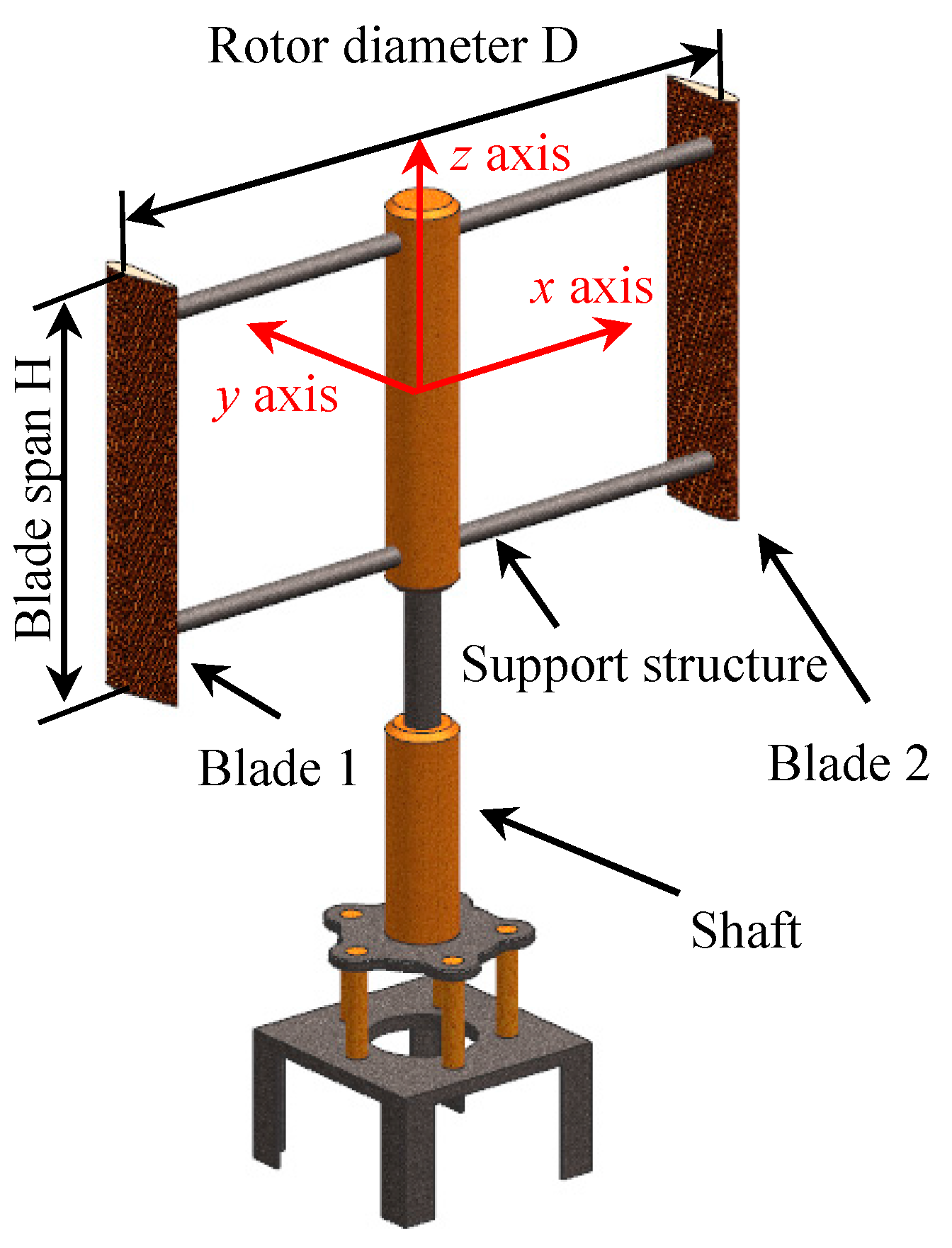

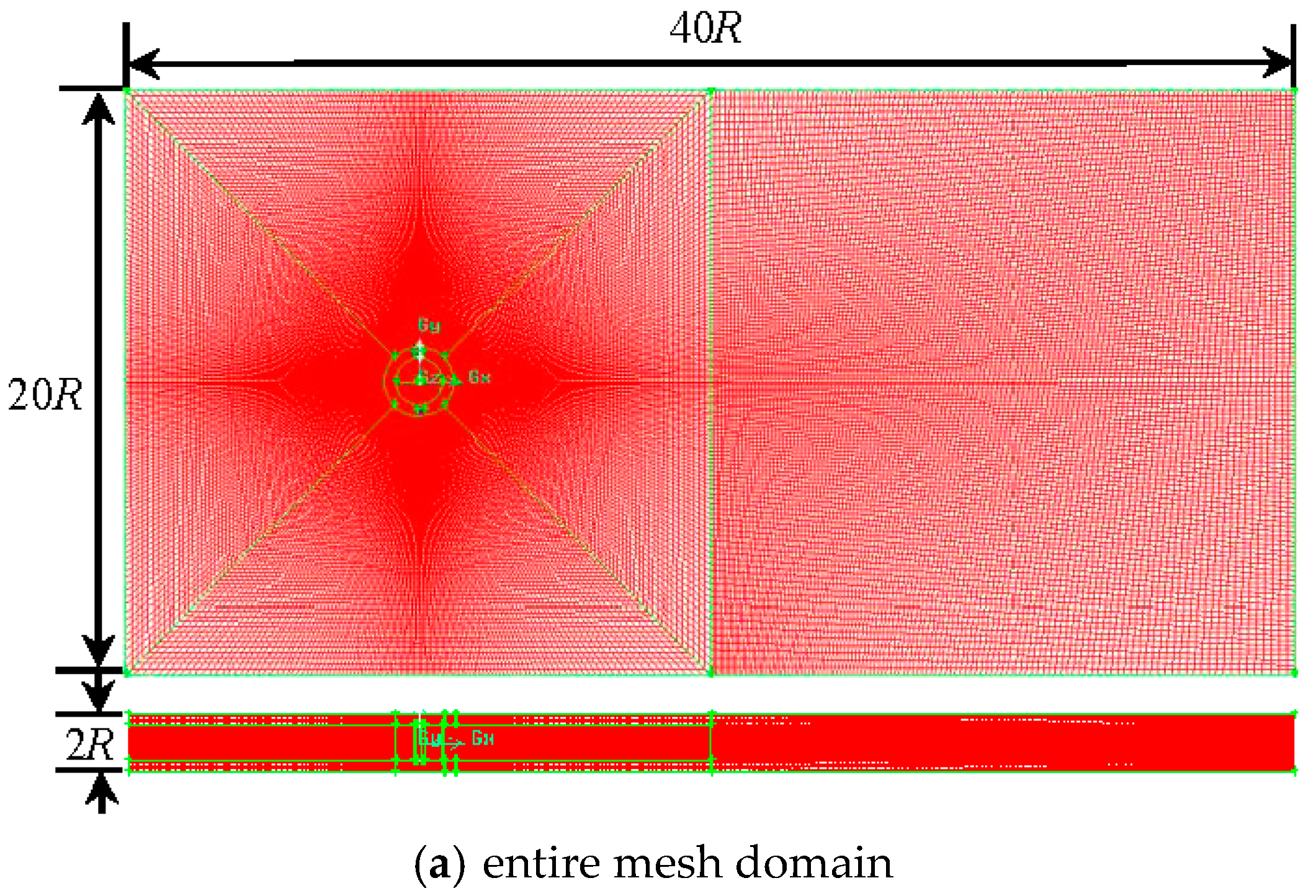
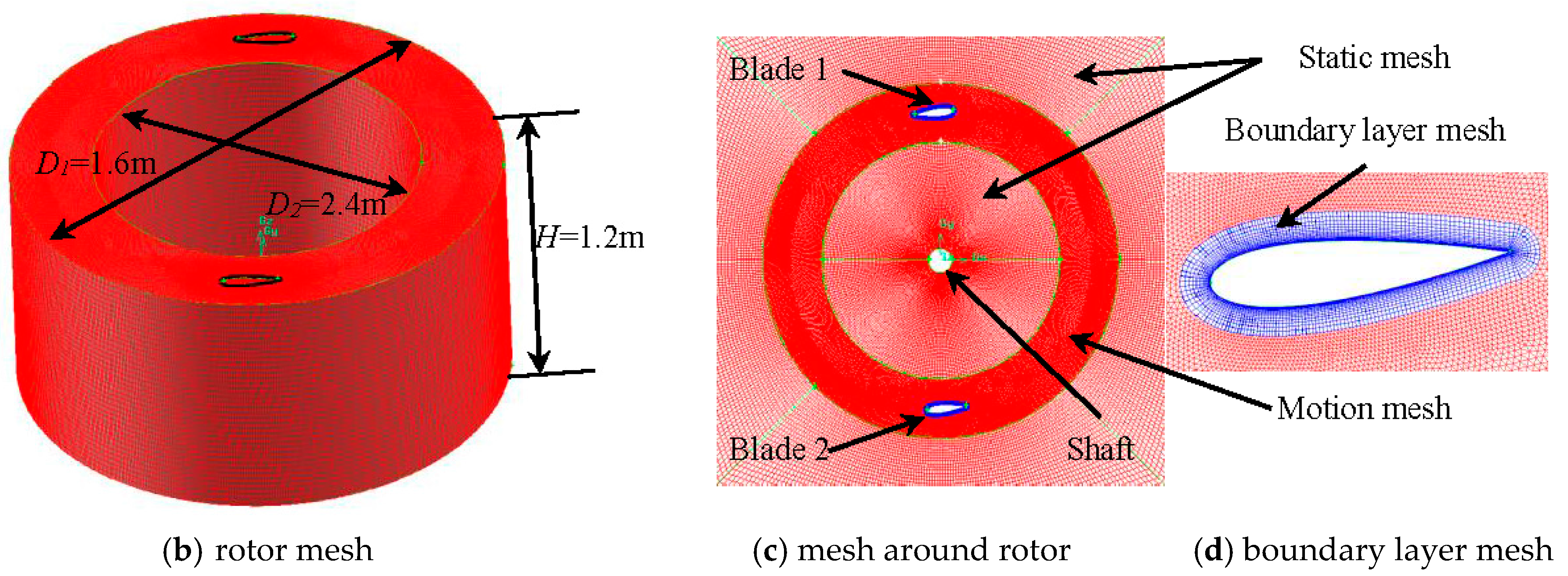
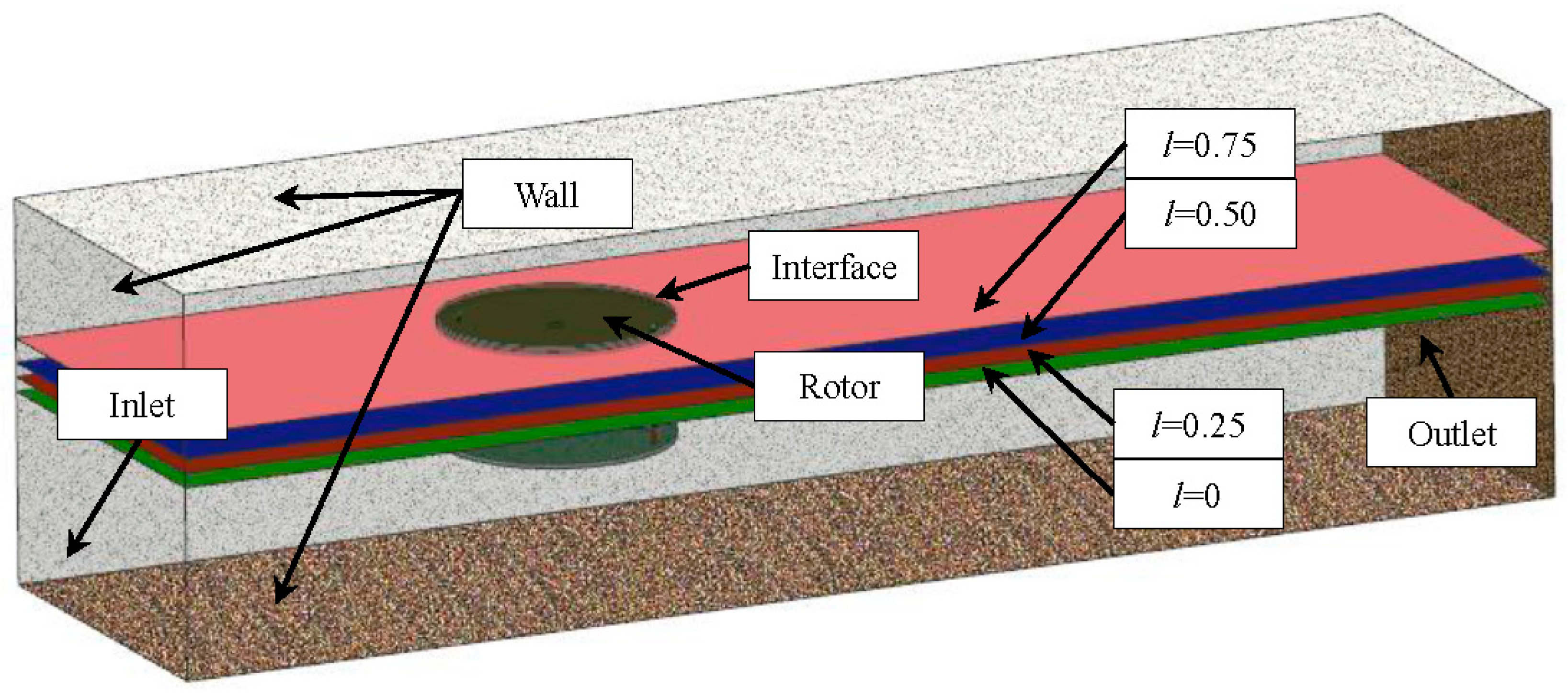
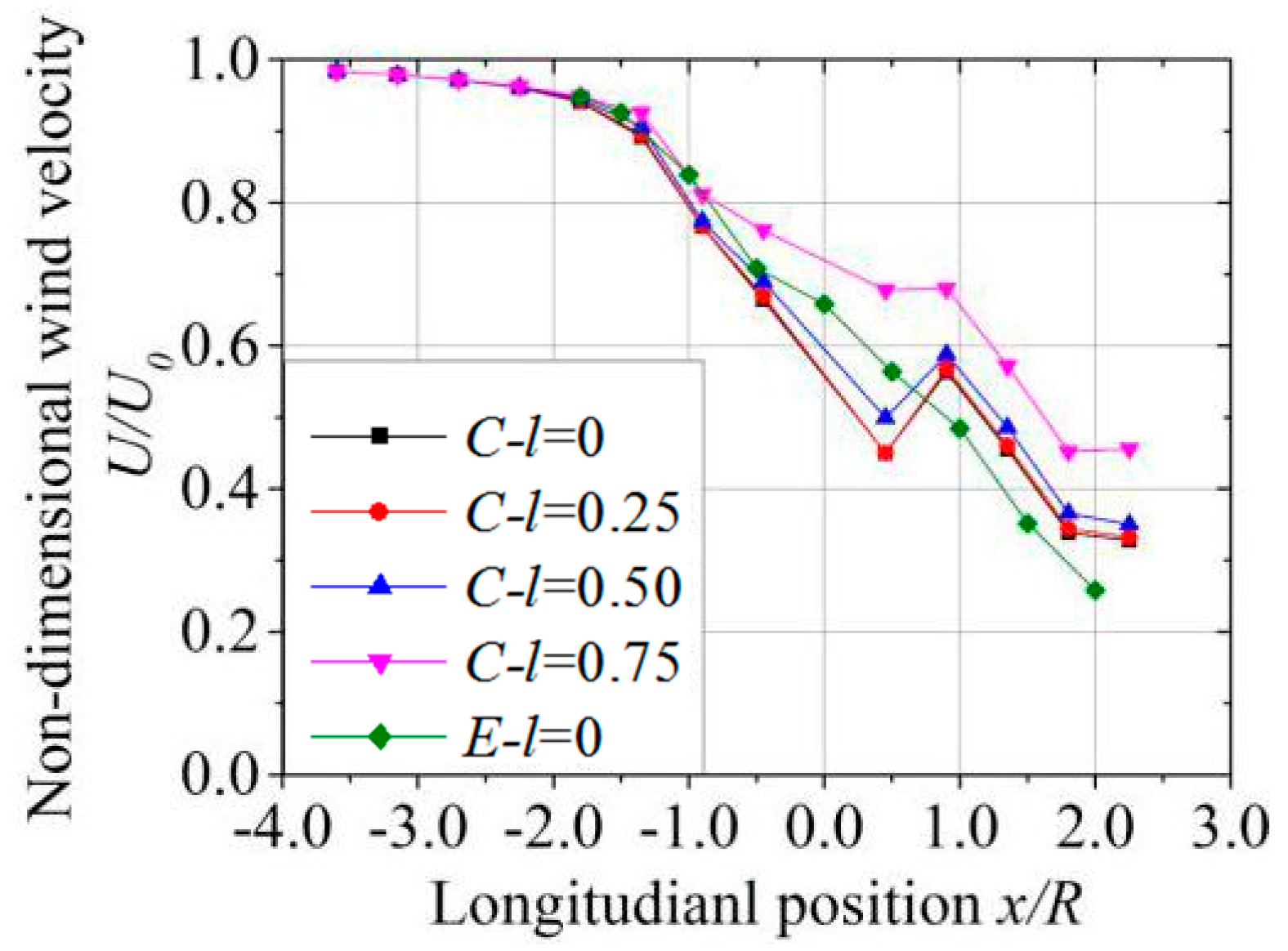
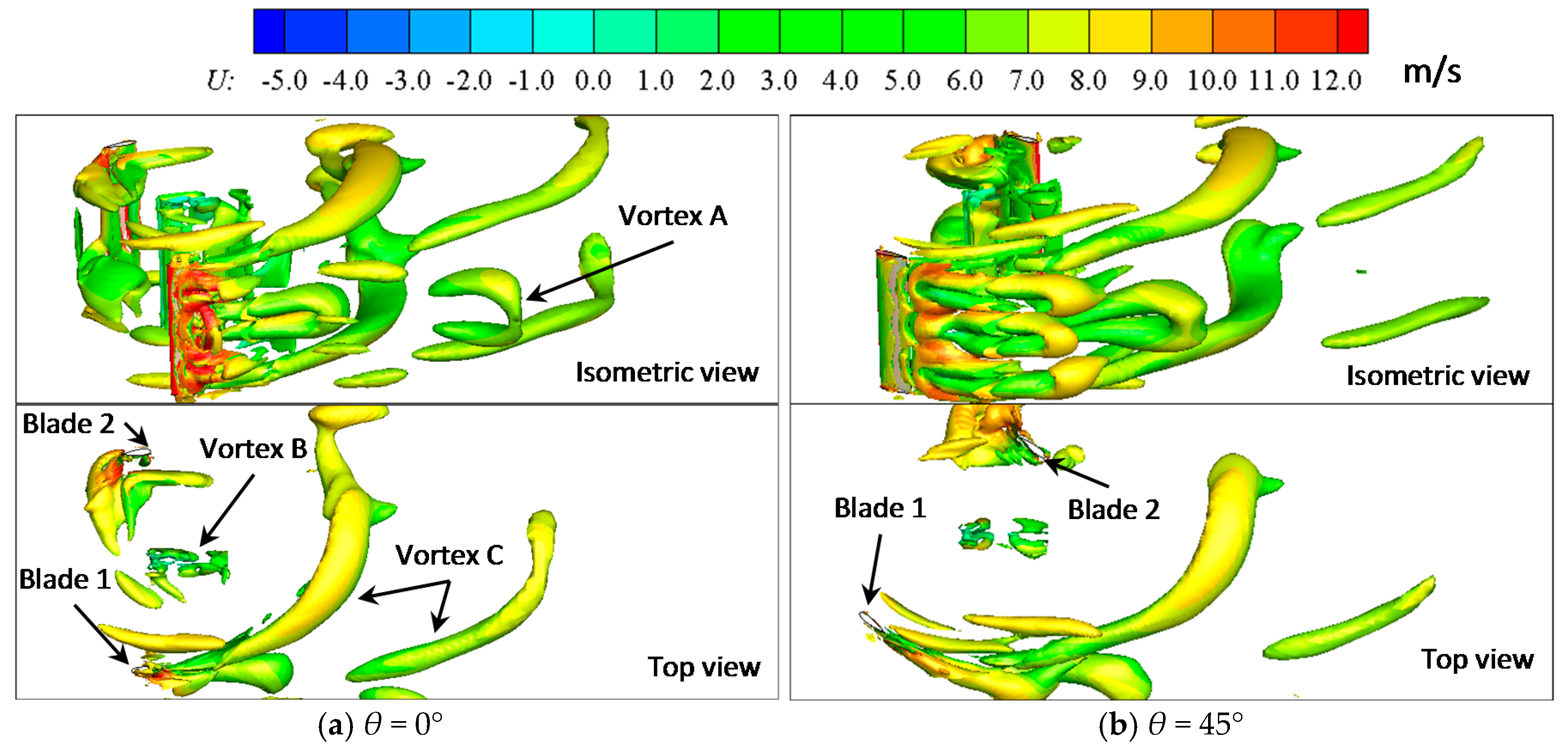

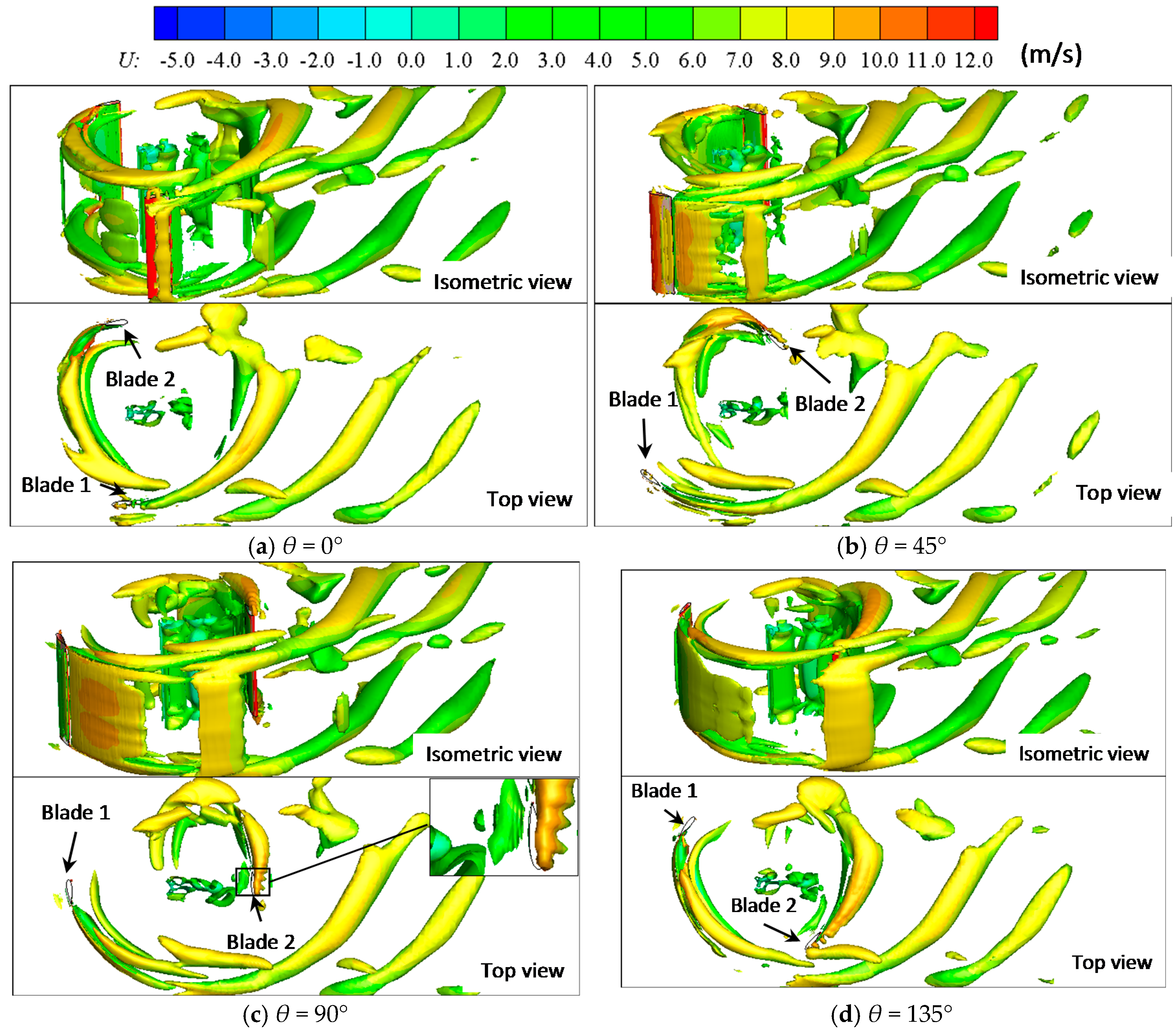
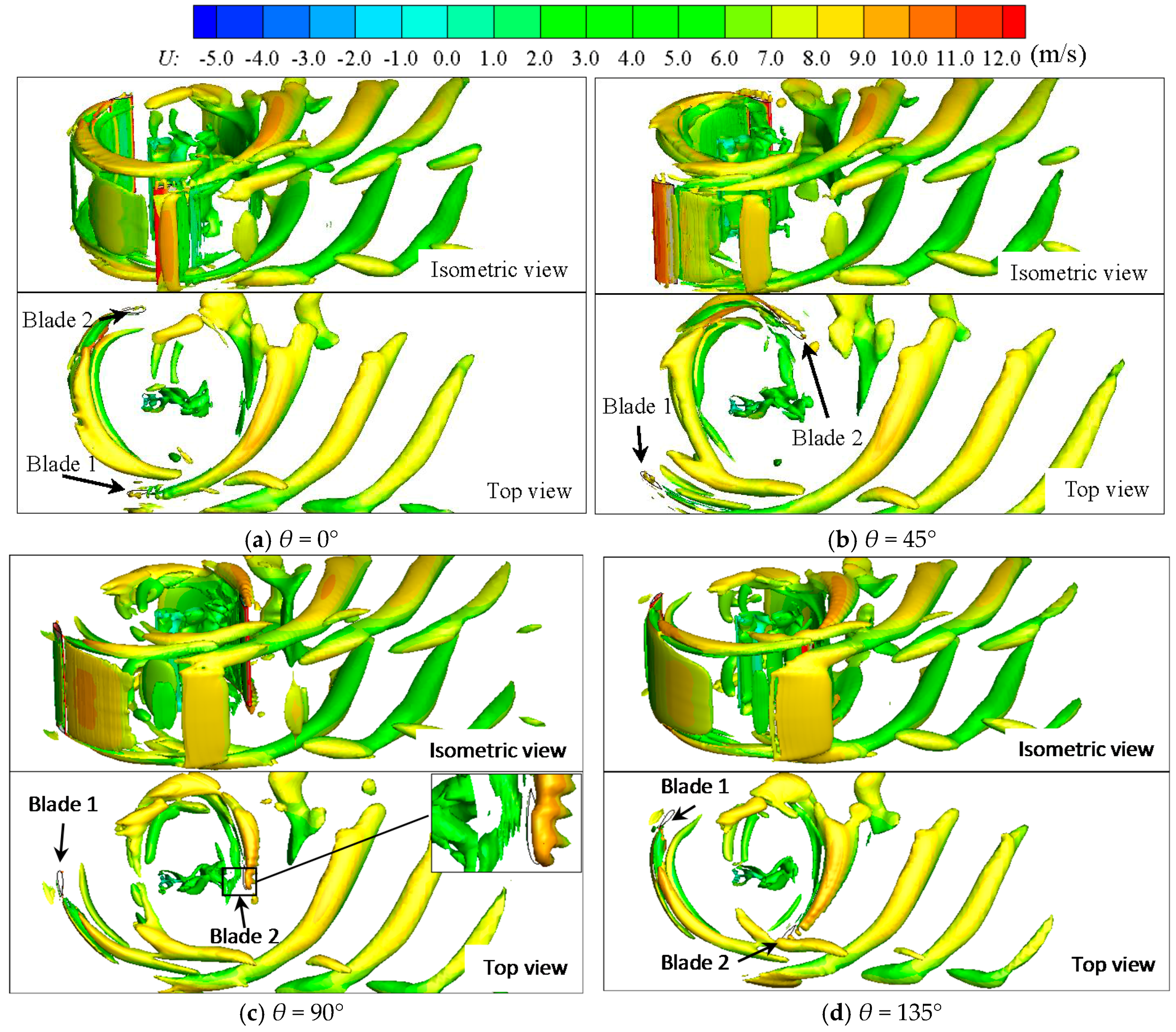
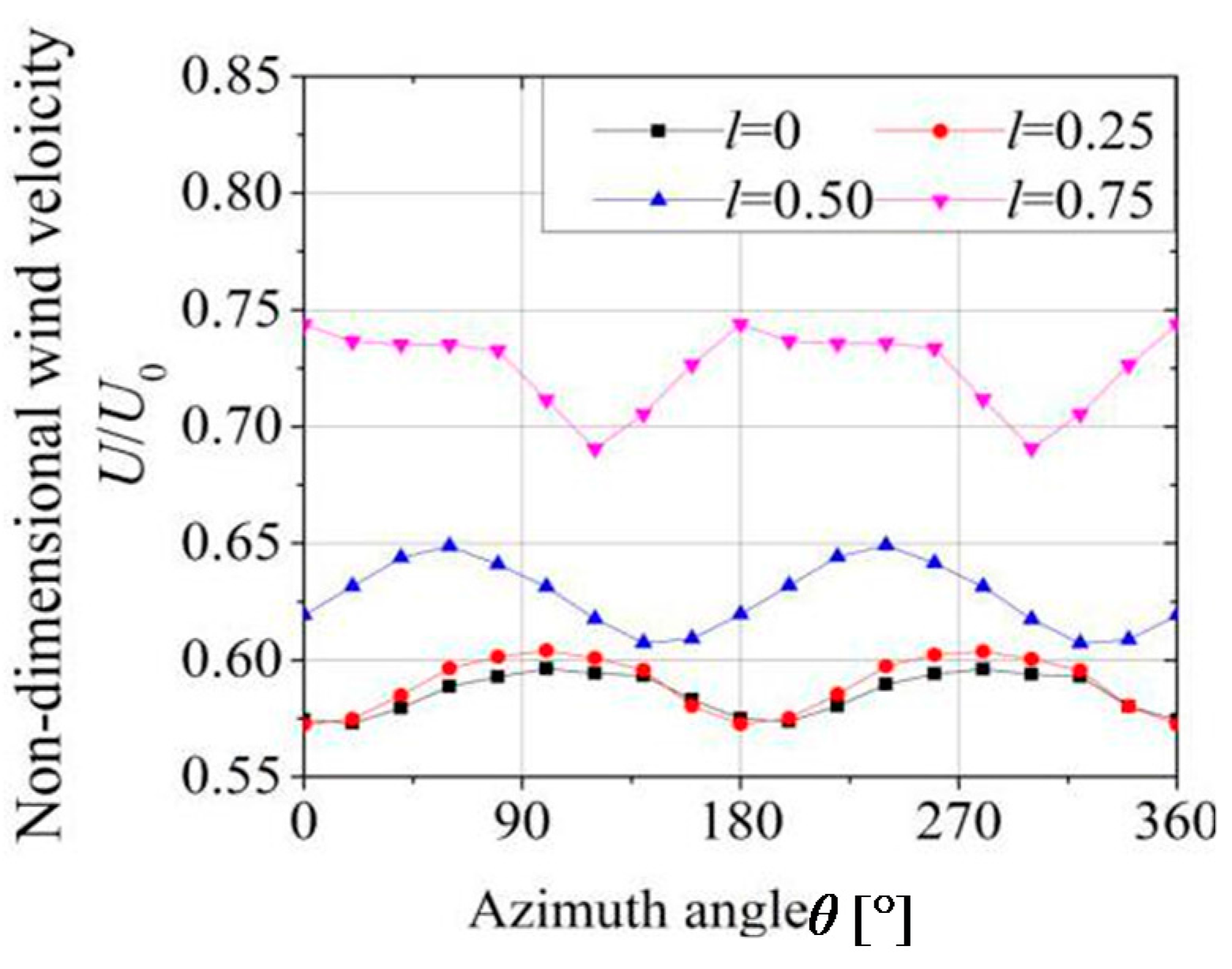
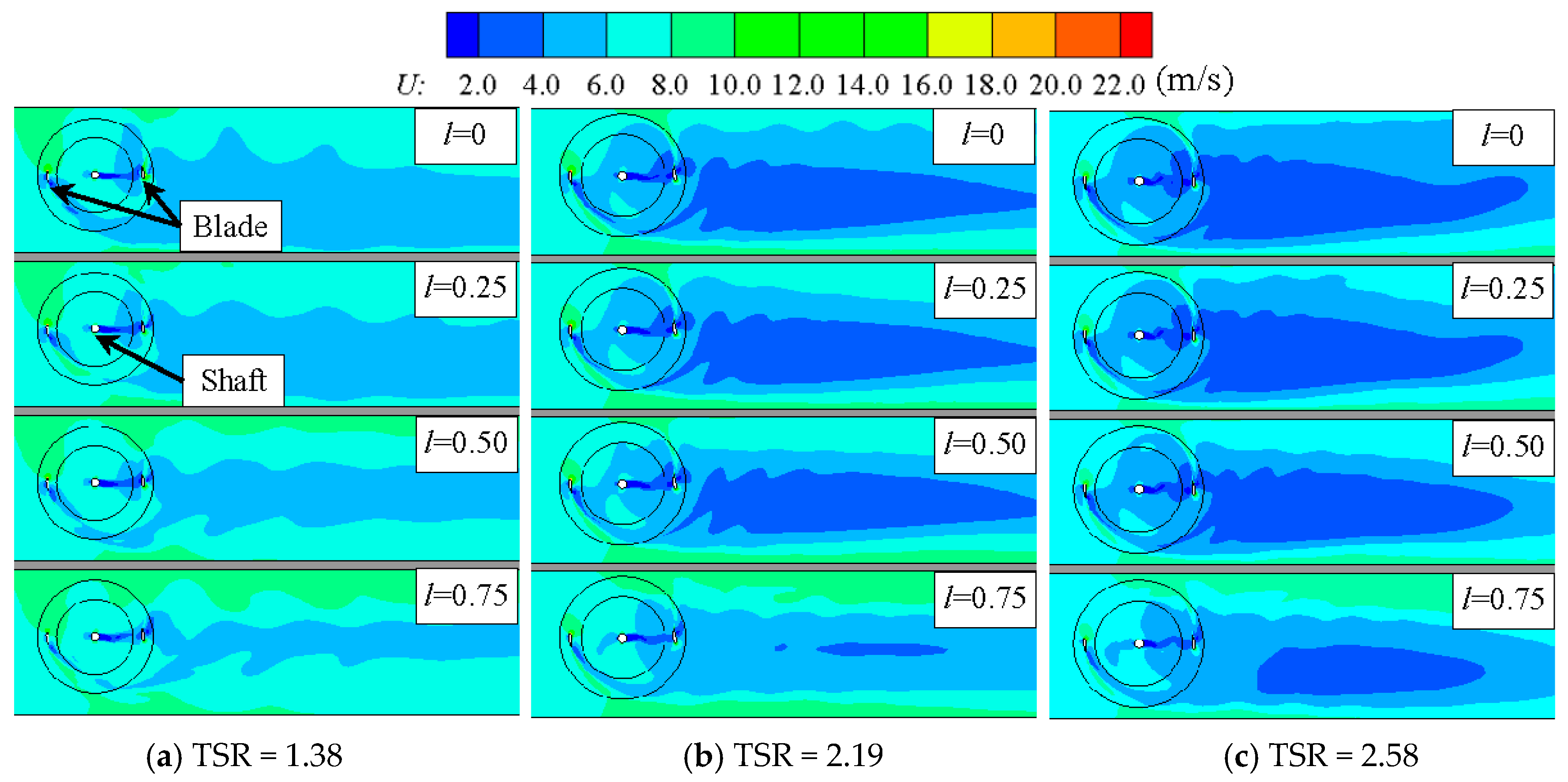
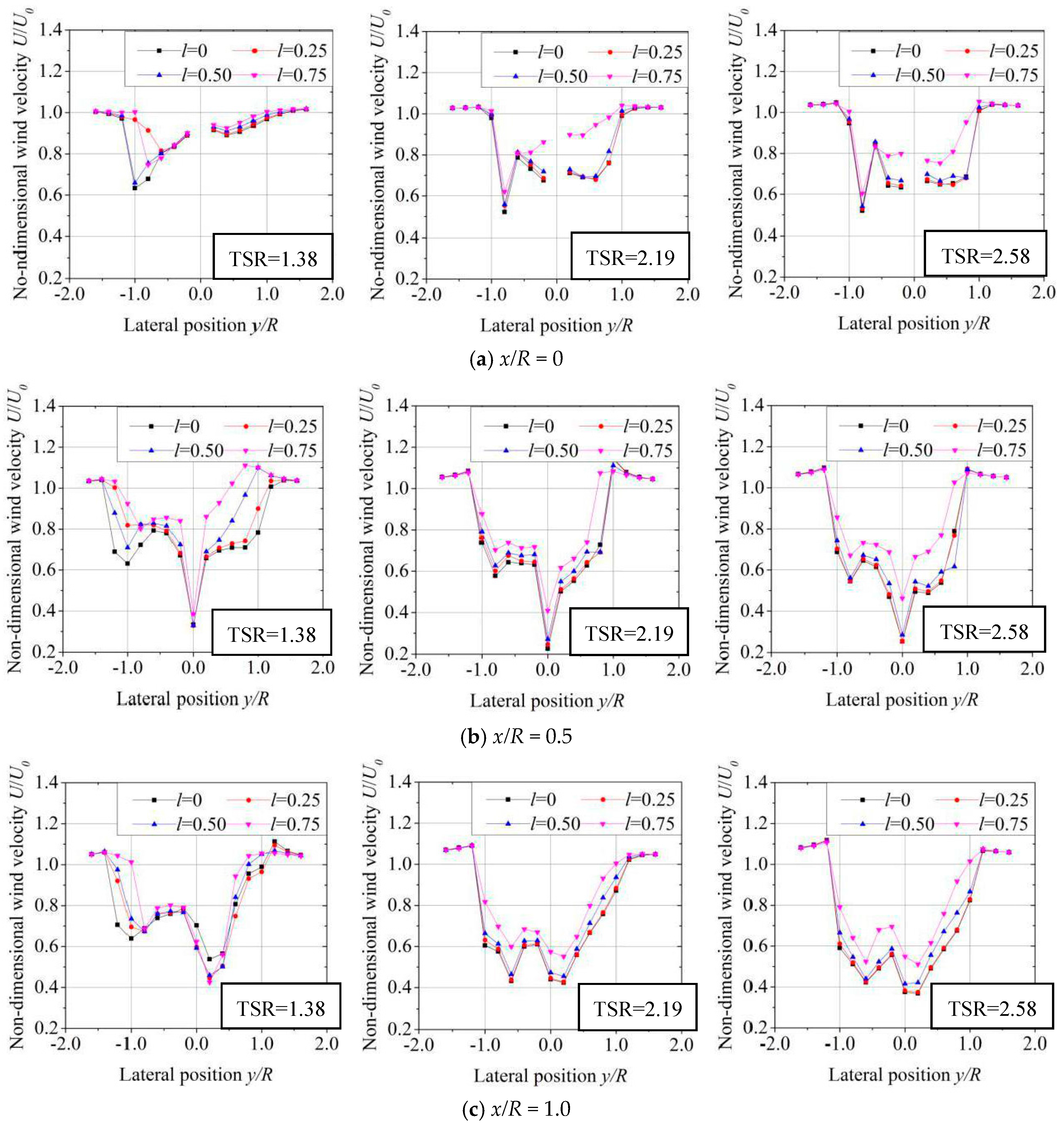
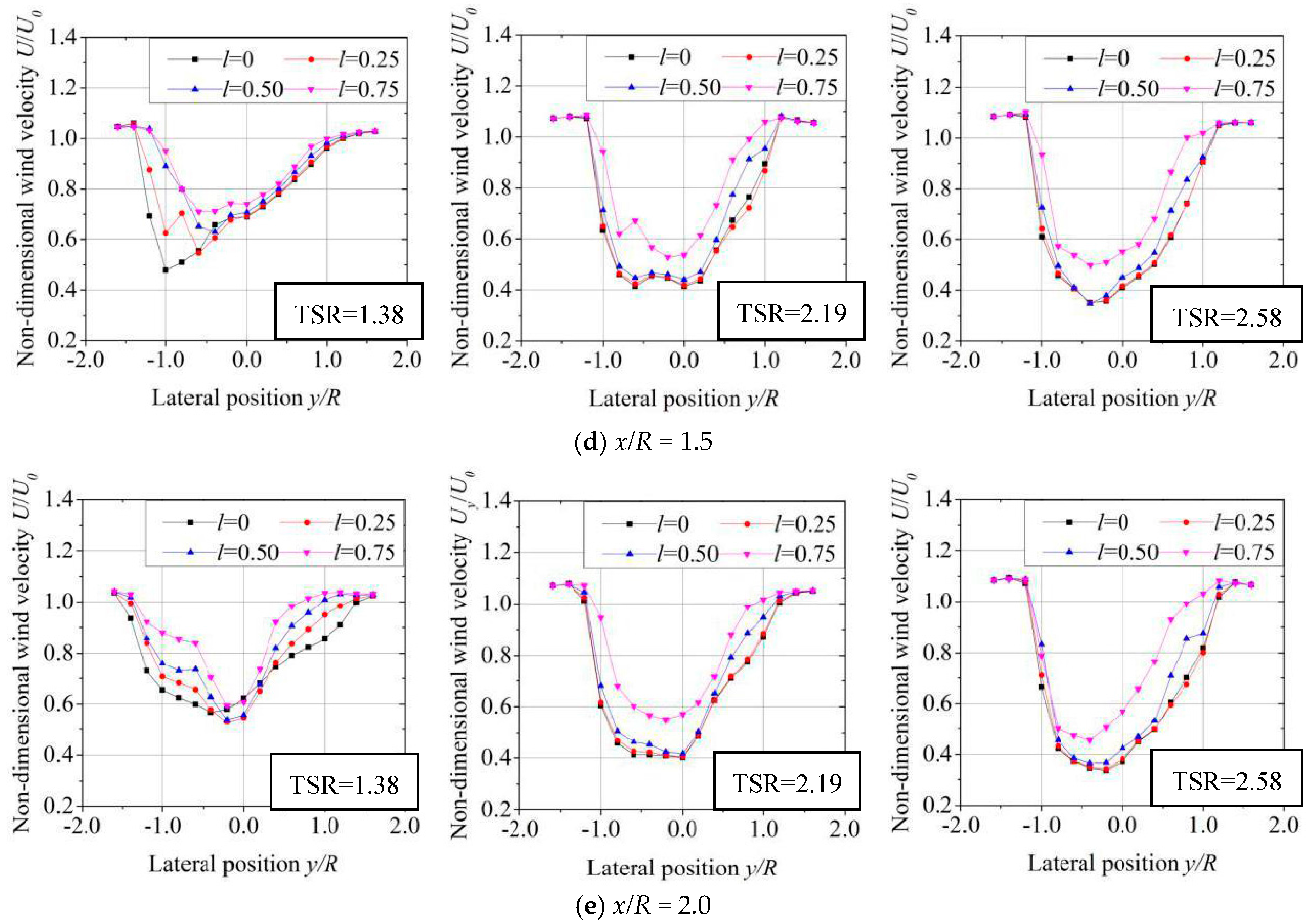
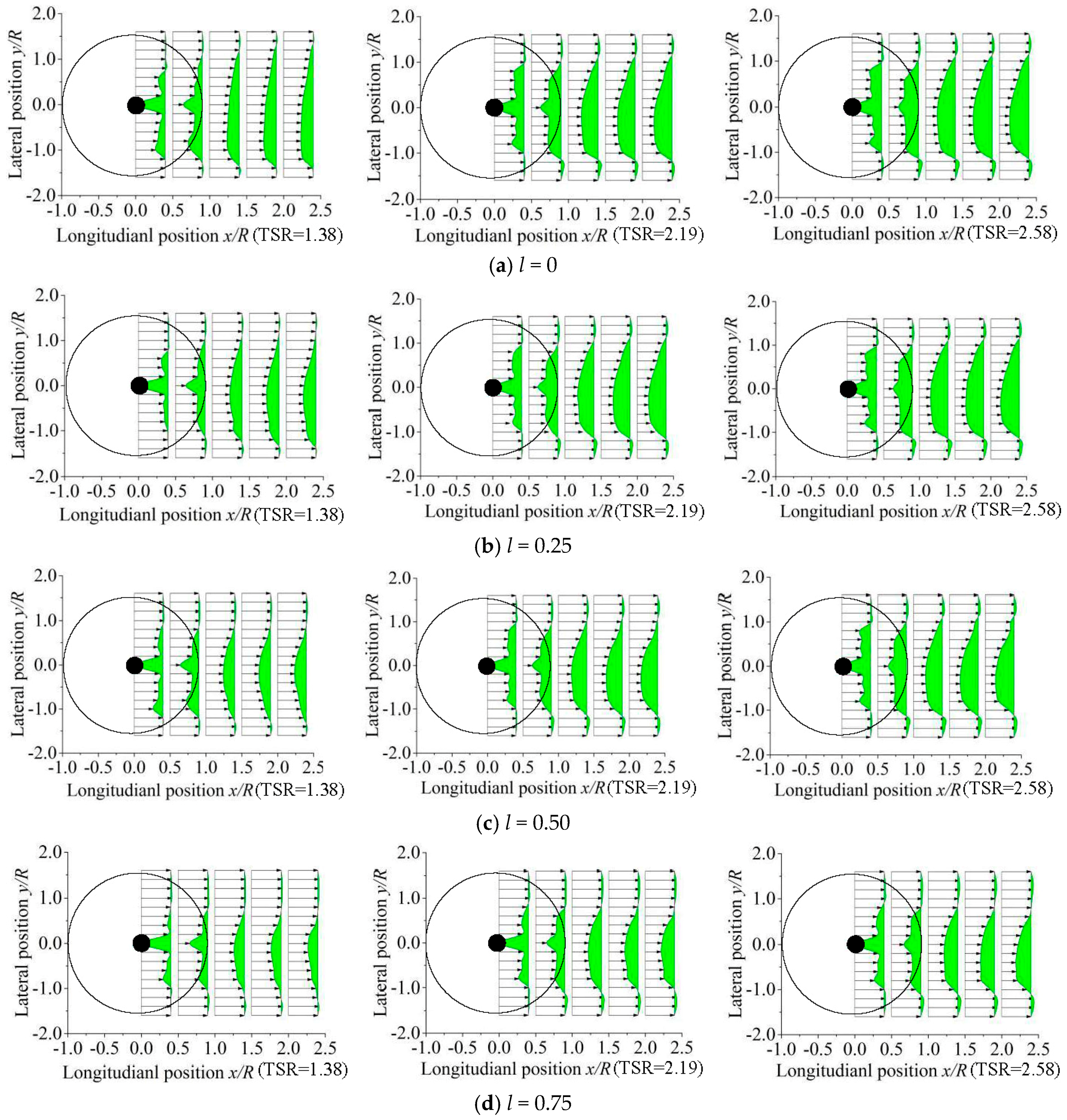

© 2017 by the authors. Licensee MDPI, Basel, Switzerland. This article is an open access article distributed under the terms and conditions of the Creative Commons Attribution (CC BY) license (http://creativecommons.org/licenses/by/4.0/).
Share and Cite
Yang, Y.; Guo, Z.; Zhang, Y.; Jinyama, H.; Li, Q. Numerical Investigation of the Tip Vortex of a Straight-Bladed Vertical Axis Wind Turbine with Double-Blades. Energies 2017, 10, 1721. https://doi.org/10.3390/en10111721
Yang Y, Guo Z, Zhang Y, Jinyama H, Li Q. Numerical Investigation of the Tip Vortex of a Straight-Bladed Vertical Axis Wind Turbine with Double-Blades. Energies. 2017; 10(11):1721. https://doi.org/10.3390/en10111721
Chicago/Turabian StyleYang, Yanzhao, Zhiping Guo, Yanfeng Zhang, Ho Jinyama, and Qingan Li. 2017. "Numerical Investigation of the Tip Vortex of a Straight-Bladed Vertical Axis Wind Turbine with Double-Blades" Energies 10, no. 11: 1721. https://doi.org/10.3390/en10111721



